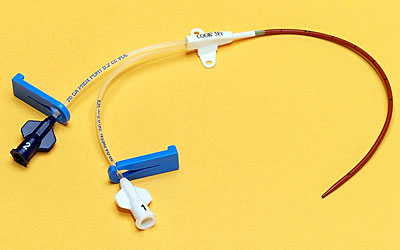
In a move that could significantly reduce the likelihood of children becoming infected during intensive care unit stays, Cook's Spectrum Minocycline/Rifampin catheter has received approval in Europe.
The medical device has been available commercially for years in the United States, Canada, Latin America, and other countries.
"This approval will mean a reduced risk of catheter-related bloodstream infections for pediatric patients and save hospitals the enormous cost of treating these patients who develop infections," said Cook's Bruce Gingles. "Now, doctors in Europe treating pediatric critical care cases will have the choice of using a catheter that provides the highest level of protection against catheter-related bloodstream infections." Pediatric patients receiving a central venous line are ten times more likely to become infected.
Recent studies have shown that catheter-related bloodstream infection rates among pediatric patients in intensive care units are often higher than the rates for adults being treated in intensive care units. Cook's clinically proven Spectrum catheter is used primarily in critical care settings.
"The antimicrobial catheter, along with education and aseptic techniques, provides protection against catheter-related bloodstream infections for both pediatric and adult patient populations," Gingles said.
Cook Spectrum catheters use the company's patented antimicrobial process that helps provide protection on both the internal and external surfaces of the catheter. The catheters are twelve times more likely to resist catheter-related infections than chlorhexadine/silver sulfadiazine-coated catheters.
Cook makes medical devices.